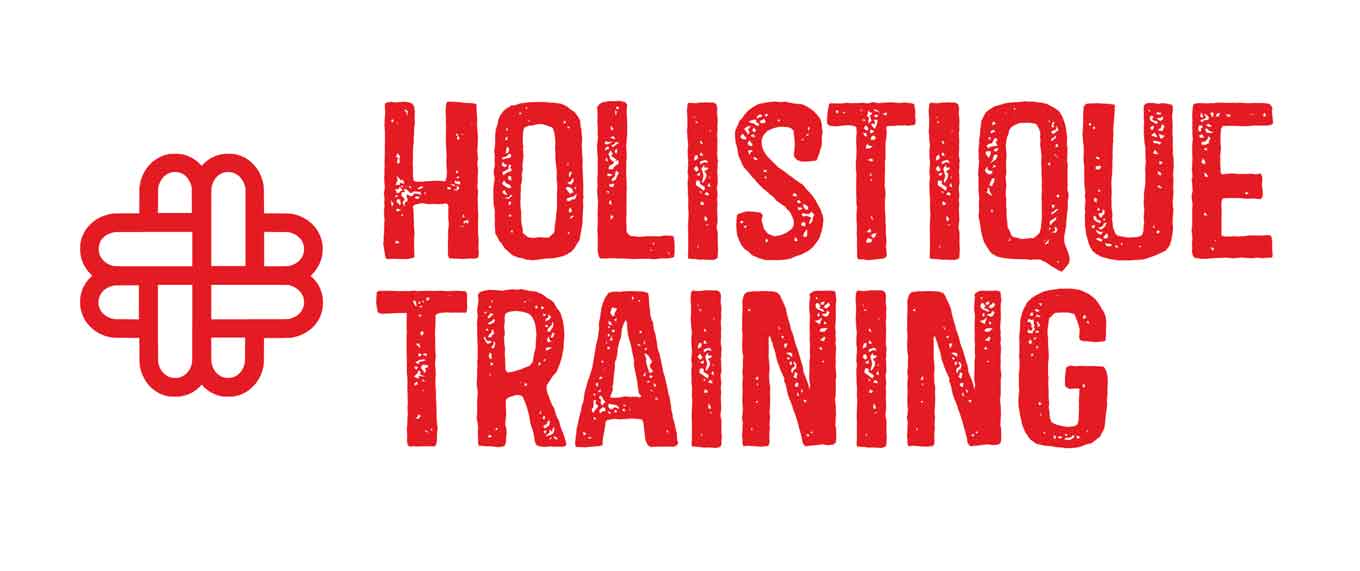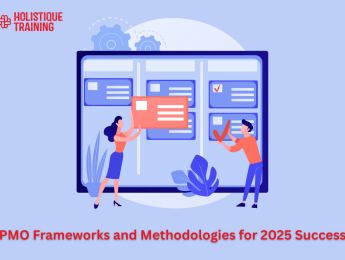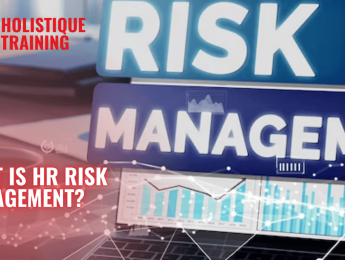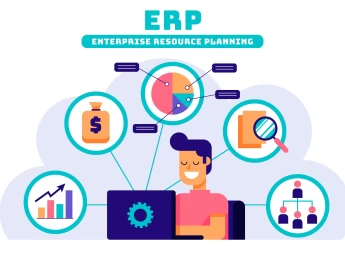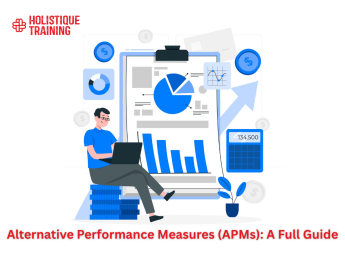- Table of Contents
- 1. Introduction:
- 2. Understanding PMO Structures and Types
- 3. PMO Frameworks: The Foundation for Consistency and Governance
- 1. PMI’s PMBOK® Guide Framework
- 2. PRINCE2 Framework
- 3. ISO Standards
- 4. P3O Framework
- 4. PMO Methodologies: The Engine of Project Delivery
- 1. Waterfall Methodology
- 2. Agile Methodology
- 3. Hybrid Methodology
- 4. Lean and Six Sigma
- 5. Establishing a PMO Governance Model
- Key Governance Elements
- 6. PMO Maturity Models and Continuous Improvement
- Leading Maturity Models
- 7. Technology and Digital Transformation in PMO
- 1. The Digitalisation of PMO Operations
- 2. The Rise of AI-Enabled PMOs
- 3. System Integration and Data Ecosystems
- 4. Real-World Examples of Digital PMOs
- 5. The Future of Digital PMOs
- 8. Challenges in Implementing PMO Frameworks
- 1. Common Pitfalls
- 2. Organisational and Cultural Barriers
- 3. Strategies for Success
- 4. Transforming Perception: From Bureaucracy to Value
- 9. Case Studies: Successful PMO Implementations
- 1. NHS Digital (UK)
- 2. NASA
- 3. Banking Sector Example
- 10. Conclusion:
1. Introduction:
In today’s dynamic business landscape, where digital transformation and complex multi-project environments dominate, the Project Management Office (PMO) has become an organisational necessity rather than a luxury. A PMO serves as the central governance body that defines, standardises, and maintains project management practices across an organisation. Its primary purpose is to ensure that projects are executed efficiently, align with strategic objectives, and deliver measurable value.
With global teams, hybrid work models, and the rise of automation, organisations are facing growing challenges in maintaining consistency across projects. This is where a well-designed PMO framework plays a pivotal role. It provides the structure needed for effective governance, risk control, performance tracking, and cross-functional collaboration.
According to the PMI Pulse of the Profession 2024 report (PMI), organisations with mature PMOs deliver 33% more projects on time and within budget compared to those without one. Moreover, 68% of high-performing organisations now consider their PMO a strategic partner rather than an administrative unit.
As the complexity of project portfolios continues to grow, establishing a robust PMO framework and methodology ensures that every project—no matter its size or scope—contributes directly to organisational success and long-term sustainability.
2. Understanding PMO Structures and Types
PMOs vary widely across organisations, depending on their maturity, culture, and strategic focus. The Project Management Institute (PMI) identifies three primary types of PMOs, each serving a different level of authority and control within the enterprise:
PMO Type | Key Features | Authority Level | Ideal Use Case |
Supportive PMO | Provides templates, training, and guidance. Offers best practices without enforcing compliance. | Low | Start-ups or organisations with low PM maturity. |
Controlling PMO | Monitors compliance, defines governance processes, and ensures projects align with standards. | Moderate | Medium to large organisations with semi-formalised governance. |
Directive PMO | Directly manages and executes projects. Allocates resources and sets priorities. | High | Enterprises with mission-critical or regulatory projects. |
The right PMO structure depends largely onorganisational culture and maturity. For example, a supportive PMO may suit a creative industry such as marketing or design, where flexibility is key, while a directive PMO might fit heavily regulated sectors such as healthcare or finance.
In recent years, many corporations have shifted towards the Enterprise PMO (EPMO) model. Unlike traditional PMOs that operate at the departmental level, an EPMO functions at the strategic apex of the organisation, ensuring that every project, programme, and portfolio directly supports corporate strategy. The EPMO acts as a strategic enabler—bridging the gap between project delivery and business value.
3. PMO Frameworks: The Foundation for Consistency and Governance
A PMO framework is the backbone of project governance, offering a standardised system for how projects are initiated, planned, executed, monitored, and closed. It defines policies, roles, decision-making hierarchies, and performance indicators that maintain uniformity across the organisation.
Several globally recognised frameworks guide PMO establishment and management:
1. PMI’s PMBOK® Guide Framework
Developed by the Project Management Institute (PMI), the Project Management Body of Knowledge (PMBOK® Guide) is one of the most widely adopted frameworks worldwide. It categorises project management into process groups and knowledge areas, such as scope, time, cost, risk, and stakeholder management. PMBOK provides flexibility and scalability, making it adaptable across industries and project types.
2. PRINCE2 Framework
PRINCE2 (Projects IN Controlled Environments), managed by AXELOS ( AXELOS P3O® Guidance ), is the UK government’s de-facto project management standard. It emphasises control, governance, and defined roles, ensuring that projects maintain business justification throughout their lifecycle. PRINCE2 is process-driven and ideal for organisations requiring transparency and traceability.
3. ISO Standards
ISO 21500 provides general guidance on project management principles, while ISO 9001 ensures that PMO processes meet quality management standards. Together, they help organisations maintain compliance and consistency across global operations.
4. P3O Framework
The P3O® (Portfolio, Programme, and Project Offices) model, also from AXELOS, focuses on establishing a connected network of governance offices that align strategy and execution. It supports scalability and portfolio oversight for complex organisations.
Framework | Primary Focus | Governance Model | Scalability |
PMBOK® Guide | Knowledge areas and processes | Flexible | High |
PRINCE2 | Defined roles, business justification | Rigid / procedural | Medium |
ISO 21500 / 9001 | Quality and compliance | Standardised | High |
P3O® | Enterprise governance structure | Modular | High |
Most modern organisations blend frameworks rather than adopting one rigidly. For instance, a multinational firm might use PRINCE2 for structure, PMBOK for process control, and ISO 9001 for quality assurance—creating a hybrid PMO framework tailored to its business environment.
4. PMO Methodologies: The Engine of Project Delivery
While frameworks define governance and structure, methodologies determine how projects are executed. They include the tools, processes, and techniques used to deliver outcomes.
1. Waterfall Methodology
The Waterfall model is linear and sequential—each phase (planning, design, development, testing, deployment) follows the previous one. It is documentation-heavy and works best in industries such as construction or engineering, where changes during execution are costly.
2. Agile Methodology
Agile , on the other hand, is iterative and collaborative. It focuses on delivering incremental value through sprints and feedback loops. Agile PMOs encourage flexibility, collaboration, and rapid adaptation—making it popular in IT, software, and marketing environments.
3. Hybrid Methodology
Many modern PMOs adopt a Hybrid model, blending the discipline of Waterfall with the flexibility of Agile. This is particularly effective in large enterprises managing both operational and innovation projects simultaneously.
Example : A telecom company might use Agile sprints for software updates but apply PRINCE2 governance for network infrastructure projects.
4. Lean and Six Sigma
These methodologies focus on process efficiency and waste reduction. Lean promotes streamlined workflows, while Six Sigma uses data-driven analysis to enhance quality. PMOs often apply these principles within their governance frameworks to optimise performance.
By integrating multiple methodologies through Methodology Management Systems or PMO playbooks, organisations can maintain agility while ensuring consistency. The right combination enables balance between innovation, control, and speed.
5. Establishing a PMO Governance Model
Governance is the core function of a PMO, ensuring that every project aligns with strategic objectives and is delivered responsibly. A PMO governance model defines accountability, decision pathways, and control mechanisms.
Key Governance Elements
- Project Prioritisation and Portfolio Alignment: Selecting initiatives that offer maximum business value.
- Risk and Change Control: Establishing escalation paths and mitigation plans following ISO 31000 risk management standards.
- Quality Assurance and Reporting: Ensuring consistent metrics and transparent reporting.
- Decision Hierarchies: Clearly defining stakeholder roles and approval authorities.
Frameworks such as COBIT 5 and ITIL 4 also offer structured governance models, especially for IT-driven organisations. COBIT 5 focuses on control objectives and accountability, while ITIL 4 addresses service management alignment.
Key Performance Indicators (KPIs)—such as schedule variance, cost performance index, and stakeholder satisfaction—are critical for tracking efficiency. Modern PMOs increasingly rely on interactive dashboards powered by tools like Power BI or ServiceNow for real-time visibility.
6. PMO Maturity Models and Continuous Improvement
PMO maturity refers to how effectively a PMO delivers its intended value and continuously enhances its capabilities. Maturity models provide a roadmap for growth—from ad-hoc management to strategic excellence.
Leading Maturity Models
- PMI’s OPM3 (Organisational Project Management Maturity Model): Measures maturity across project, programme, and portfolio domains.
- CMMI (Capability Maturity Model Integration): Focuses on process optimisation and quality management.
- P3M3 (Portfolio, Programme, and Project Management Maturity Model): Developed by AXELOS, it assesses organisational performance across seven key perspectives, including risk and control.
Maturity Level | Description |
Level 1 – Ad-hoc | Projects are managed individually without standardisation. |
Level 2 – Defined | Processes are repeatable and documented. |
Level 3 – Managed | Organisation monitors and controls project outcomes. |
Level 4 – Integrated | PMO links projects with corporate strategy. |
Level 5 – Optimised | Continuous improvement and innovation embedded in culture. |
As PMOs evolve, continuous improvement cycles (e.g., plan-do-check-act) ensure adaptability. Mature PMOs become strategic assets—driving innovation, risk control, and enterprise-wide value creation.
7. Technology and Digital Transformation in PMO
The digital era has fundamentally reshaped how PMOs operate, manage projects, and make decisions. Traditional PMOs once relied heavily on spreadsheets, manual reporting, and static documentation. Today, however, technology has transformed them into data-driven strategic centres capable of delivering insights in real time.
1. The Digitalisation of PMO Operations
Modern PMOs are no longer just administrative hubs; they have become intelligent ecosystems supported by integrated project management platforms. Tools such as Microsoft Project, Smartsheet, Jira, Asana, Trello, and Monday.com empower teams to plan, track, and collaborate seamlessly across time zones.
These platforms are often paired with data visualisation and analytics solutions like Power BI or Tableau, providing leadership teams with real-time dashboards that highlight project progress, resource allocation, budget health, and risk exposure.
This digital interconnectedness enhances visibility and reduces decision latency — meaning executives no longer wait for monthly reports; they can view live project performance data at any time. As a result, organisations move from reactive problem-solving to proactive risk management.
2. The Rise of AI-Enabled PMOs
The next major transformation is the emergence of AI-driven PMOs, where Artificial Intelligence and Machine Learning support predictive, prescriptive, and automated project management functions. These capabilities go beyond data collection — they actively assist in strategic decision-making.
Key AI Capabilities Include:
- Predictive Analytics: AI algorithms use historical data to forecast schedule delays, cost overruns, and potential risks. This helps PMOs intervene before a project deviates from its baseline.
- Automated Reporting: Natural Language Processing (NLP) tools can automatically generate weekly reports, risk summaries, and stakeholder updates, saving hours of manual effort.
- Portfolio Optimisation: AI-driven analytics identify underperforming initiatives, recommend resource reallocations, and suggest which projects to prioritise for maximum ROI.
- Sentiment Analysis: Some advanced PMOs analyse employee communications and feedback to assess project morale and engagement — key indicators of team performance.
According to Gartner IT Research , by 2026, over 70% of PMOs will adopt advanced analytics and AI solutions to drive their decisions. This evolution marks a shift from process governance to intelligence-based governance, where the PMO functions as an insight engine rather than a procedural enforcer.
3. System Integration and Data Ecosystems
Digital transformation doesn’t stop at using software — it’s about connecting systems across the organisation. The most advanced PMOs now integrate their project platforms with ERP (Enterprise Resource Planning) systems like SAP or Oracle, and CRM (Customer Relationship Management) tools like Salesforce.
This integration allows project data (budgets, invoices, resource costs) to flow directly into enterprise-level dashboards, eliminating data silos and improving accuracy.
Additionally, cloud-based PMOs are becoming the norm, offering scalability, accessibility, and improved disaster recovery. The shift to cloud and mobile technologies enables remote teams to collaborate efficiently and makes project governance agile and responsive to change.
4. Real-World Examples of Digital PMOs
Global enterprises are leading the way in this transformation:
- Microsoft’s Enterprise PMO uses Power BI integrated with Microsoft Project and Azure AI to analyse project performance and predict delivery bottlenecks across global teams.
- Siemens implemented a digital twin PMO model, combining simulation technology with real-time data analytics to test project scenarios before implementation — reducing risks and improving planning accuracy.
- IBM has adopted AI-driven project assistants that automate scheduling, resource allocation, and compliance tracking within their Agile PMO frameworks.
These examples show that digital PMOs do more than streamline administration — they act as strategic business partners driving transformation, innovation, and resilience across entire organisations.
5. The Future of Digital PMOs
The future PMO will be fully intelligent, cloud-native, and adaptive. With the integration of AI, blockchain, and IoT, PMOs will be able to track real-time operational data, automate compliance checks, and align projects directly with business outcomes.
Soon, PMOs will evolve into Strategic Intelligence Offices (SIOs) — entities responsible not only for project success but also for organisational foresight, sustainability alignment, and innovation management.
In this new paradigm, digital maturity will directly correlate with strategic agility, making the PMO a central driver of competitiveness in the Fourth Industrial Revolution.
8. Challenges in Implementing PMO Frameworks
While digital PMOs promise efficiency, consistency, and strategic value, implementation is rarely straightforward. The journey from concept to a fully functional PMO often involves cultural, operational, and leadership challenges.
1. Common Pitfalls
Resistance to Change
The introduction of a PMO — particularly one that standardises processes and introduces automation — can be perceived as a threat to autonomy. Employees may resist new reporting structures or feel over-monitored. This resistance is especially strong in creative or decentralised organisations.
Lack of Executive Sponsorship
Without strong leadership backing, PMOs often struggle to gain legitimacy. A PMO needs top-level advocates who can champion its value and secure the necessary resources. Without executive buy-in, governance frameworks tend to lose momentum.
Over-Bureaucratisation
A frequent criticism of PMOs is that they can become process-heavy and slow-moving. Excessive documentation, rigid templates, and unnecessary approvals can reduce agility and frustrate project teams. Striking the right balance between control and flexibility is critical.
Unclear Roles and Responsibilities
Ambiguity over who owns project decisions, deliverables, and reporting responsibilities often leads to duplication or conflict. A clear RACI matrix (Responsible, Accountable, Consulted, Informed) is vital for avoiding confusion.
2. Organisational and Cultural Barriers
Beyond structural issues, organisational culture plays a decisive role. Some teams view PMOs as “policing units” rather than enablers. In global organisations, cultural differences can further complicate governance — for example, what works in a UK-based PRINCE2 environment might not suit the flexible culture of a U.S. Agile team.
This is why PMO implementation must be accompanied by change management strategies that address communication, training, and leadership engagement.
3. Strategies for Success
Engage Stakeholders Early
Stakeholder buy-in begins with communication. Explain why the PMO exists — not just what it does. Highlight its value in reducing rework, improving quality, and aligning projects with business goals.
Start Small, Then Scale
Instead of launching an enterprise-wide PMO immediately, begin with a pilot or departmental PMO. Demonstrate measurable success — such as improved delivery time or reduced costs — and use that data to justify expansion.
Continuous Training and Upskilling
Equip teams with the knowledge to use digital tools effectively. PMO staff and project managers should be regularly trained in emerging methodologies (Agile, Hybrid, Lean) and software solutions. Investing in certifications like PMP, PRINCE2, or PMO-CP also reinforces credibility.
Establish Feedback Loops
A PMO should evolve based on lessons learned. Create channels for project teams to share insights, challenges, and suggestions for process improvement. This fosters a sense of collaboration rather than compliance.
Integrate Change Management Practices
Use frameworks like ADKAR (Awareness, Desire, Knowledge, Ability, Reinforcement) to manage organisational change systematically. Change leaders within each department can act as ambassadors for the PMO vision.
4. Transforming Perception: From Bureaucracy to Value
The key to long-term success is ensuring that the PMO is seen as a strategic enabler, not a bureaucratic barrier. This perception shift happens when the PMO delivers visible results — reduced risk exposure, improved budget accuracy, or faster delivery cycles.
When executives can see tangible performance improvements, and teams experience less confusion and clearer direction, the PMO evolves into a trusted partner for growth.
Ultimately, successful PMOs operate at the intersection of governance, culture, and technology. They combine structure with adaptability, ensuring that every process contributes to innovation and performance rather than hindering it.
9. Case Studies: Successful PMO Implementations
1. NHS Digital (UK)
The NHS Digital PMO introduced PRINCE2-based governance to manage nationwide health technology programmes. By standardising project documentation and introducing KPI-based dashboards, the PMO improved delivery timelines by 27%.
2. NASA
NASA’s PMO operates under a highly structured governance model aligned with PMBOK and ISO standards. It successfully balances innovation (e.g., Artemis missions) with safety and compliance, illustrating how a PMO can thrive in high-risk, high-complexity environments.
3. Banking Sector Example
A European investment bank implemented a hybrid PMO framework integrating PMBOK and Agile principles. This reduced project cycle times by 35% and improved regulatory compliance reporting across its digital transformation portfolio.
These examples highlight that the most effective PMOs are customised, data-driven, and strategically aligned, not just process-oriented
10. Conclusion:
The PMO has evolved from an administrative oversight function into a strategic powerhouse that drives enterprise transformation. Its role now extends beyond project control to strategic alignment, digital innovation, and cultural leadership.
Future PMOs will integrate Agile governance, AI analytics, and sustainability principles to ensure long-term organisational resilience. The next decade will likely witness the rise of Adaptive PMOs—units capable of dynamically reshaping governance and methodologies in response to business change.
Ultimately, a well-designed PMO framework is not just about project delivery—it is about building a consistent, future-ready organisation where strategy and execution work hand in hand.
